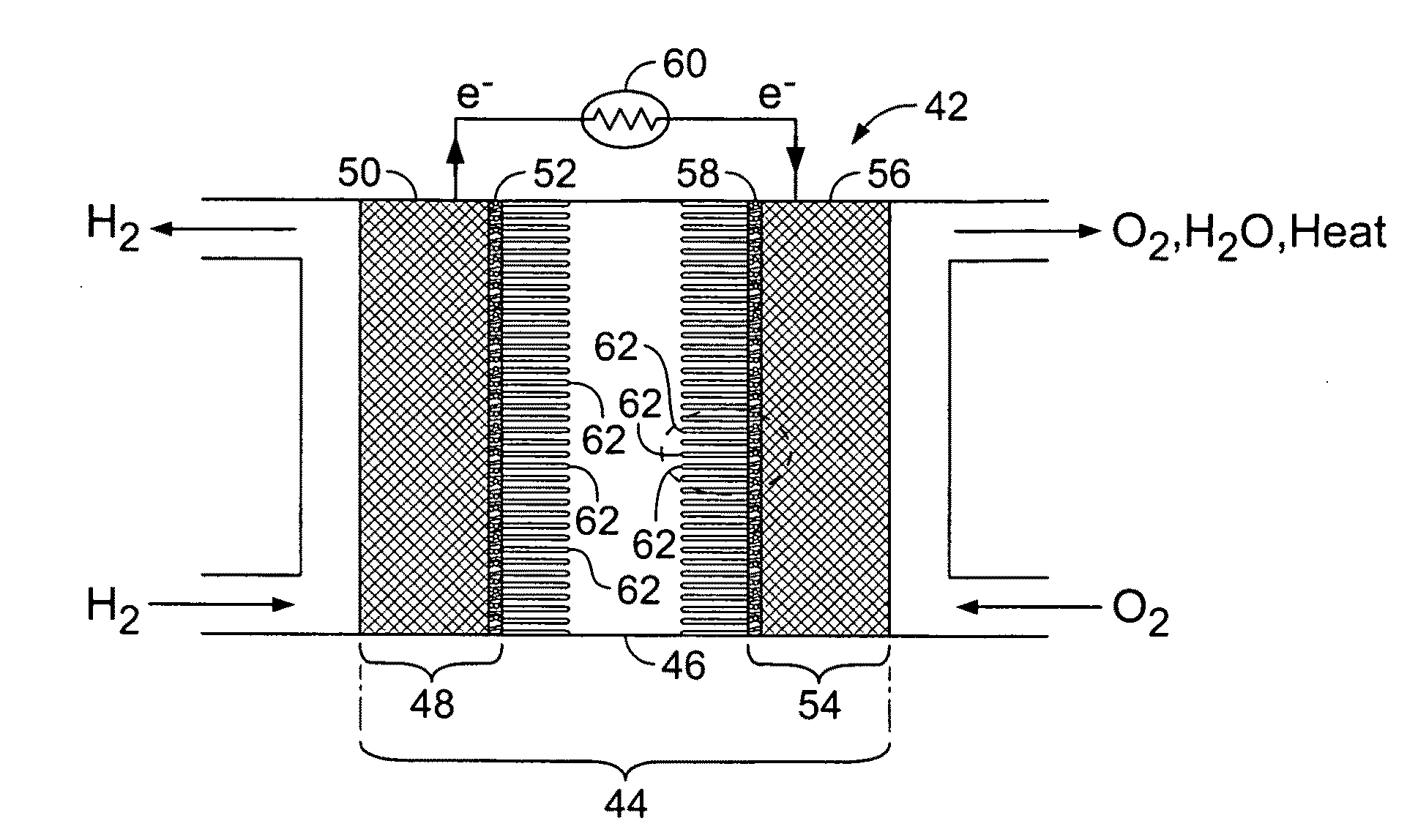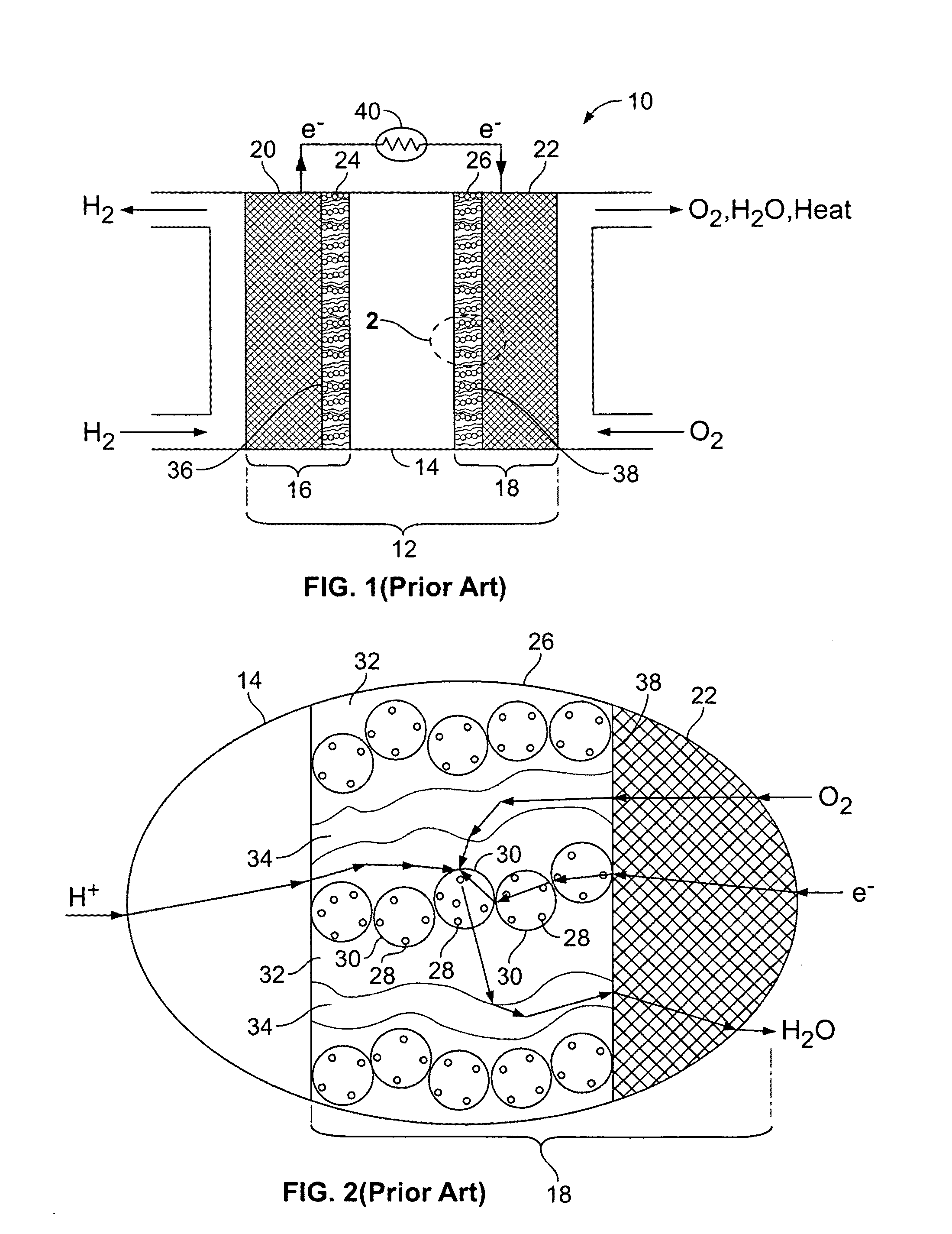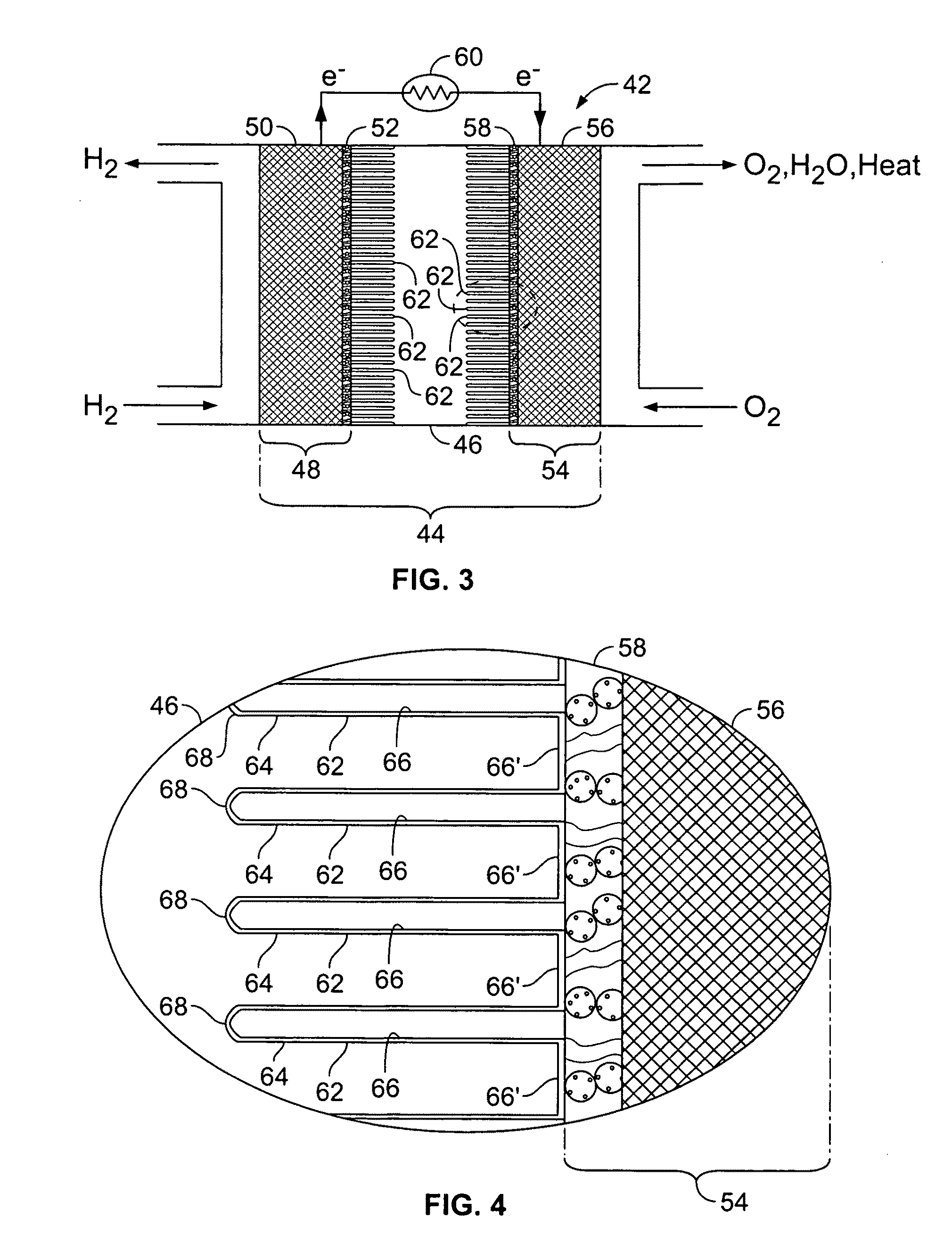Nanoengineered membrane-electrode assembly for high-temperature proton exchange membrane fuel cells
a proton exchange membrane and electron exchange technology, applied in the field of fuel cells, can solve the problems of limited electron current densities, more importantly, limited proton current densities, and achieve the effect of promoting the liberation of proton and electron
- Summary
- Abstract
- Description
- Claims
- Application Information
AI Technical Summary
Benefits of technology
Problems solved by technology
Method used
Image
Examples
Embodiment Construction
[0028]FIG. 3 is a schematic representation of a HTPEM fuel cell 42 having a nano-engineered MEA 44 according to an embodiment of the present invention, and FIG. 4 is an expanded detail thereof. The MEA 44 comprises a central membrane 46, an anode 48 having a gas diffusion layer 50 and a catalyst layer 52 and a cathode 54 having a gas diffusion layer 56 and a catalyst layer 58. The HTPEM fuel cell 42 may also be provided with a external circuit 60. All of the aforementioned elements of the HTPEM fuel cell 42 may have the same compositions, structures and functions of the similarly named and positioned elements of the HTPEM fuel cell 10 of FIGS. 1 and 2, except as further defined herein.
[0029]FIGS. 3 and 4 show three-dimensional features of an embodiment of the nano-engineered MEA 44 of the present invention. The three-dimensional nano-engineered central membrane 46 has an array of nanopores 62, each nanopore having an internal wall 64 which is lined with a catalyst coating 66 (e.g., ...
PUM
| Property | Measurement | Unit |
|---|---|---|
| temperatures | aaaaa | aaaaa |
| temperatures | aaaaa | aaaaa |
| diameter | aaaaa | aaaaa |
Abstract
Description
Claims
Application Information
 Login to View More
Login to View More - R&D
- Intellectual Property
- Life Sciences
- Materials
- Tech Scout
- Unparalleled Data Quality
- Higher Quality Content
- 60% Fewer Hallucinations
Browse by: Latest US Patents, China's latest patents, Technical Efficacy Thesaurus, Application Domain, Technology Topic, Popular Technical Reports.
© 2025 PatSnap. All rights reserved.Legal|Privacy policy|Modern Slavery Act Transparency Statement|Sitemap|About US| Contact US: help@patsnap.com



